

Text by Hirokuni Kanki
Photos by TOTEM
Mr.Ogura
I studied fermentation at Tokyo University of Agriculture and my field of specialization is koji, the thing I am holding in my hand.


Mr.Ogura
I was greatly impressed by the way that Dr. Jokichi Takamine bridged the gap between traditional techniques of fermentation using koji and modern enzyme industry.
Dr. Koikeda
When I researched Dr. Takamine, I learned that his father was a doctor and that he developed a deep knowledge of chemistry at a young age. He later went on to do postgraduate study in chemistry at the University of Glasgow in Scotland. Chemistry is a study that explores , “If we put this substance and that one together, it would become this or that substance .”
There are many kinds of such reactions in biological processes, but 100 years ago only a small number of people were thinking these two together: biological processes and chemical reactions.
Mr.Ogura
So, there were few people who could connect the world of living things with the world of chemistry?
Dr. Koikeda
That is right! Hardly anybody was investigating the chemistry of what happens in living things. As I understand it, Dr. Takamine was able to look at what was happening with koji from the viewpoint of Western-style chemistry. Even with his diastase idea, he seems to have intuited that the enzyme reaction could be used both to make alcohol and to serve as a medicine to help people.
Mr.Ogura
The other day, I had the opportunity to visit Amano Enzyme’s production facilities. I was a little surprised to see that you are still making koji mold, even today.
I imagined the modern enzyme industry to be very high-tech, but you are still using koji mold, a living organism, to make pharmaceuticals and other products. It was very interesting to see what a huge amount of koji is used to make enzymes.
Dr. Koikeda
When you make sake, you only need enough koji to produce the alcohol. Since our goal is to try and use the various enzymes involved in the process of making sake from koji, we need production facilities for making large quantities of koji.
Mr.Ogura
I want to ask Prof. Shimizu about “fermentation science.” I believe that you define fermentation science as a combination of three different things: “traditional culture,” as just mentioned, “modern chemistry originated in Europe,” and “handling of living organisms.” How did you come to form this outlook?
Prof. Shimizu
I think that Westerners were probably better and more advanced in looking at things through the eyes of chemistry. But it is the action of living things, microorganisms, that really cause the changes. Japan is rich in nature, so we are good at seeing and cultivating living things. We have so many unique fermentation and enzyme products! More than any other country, I think.
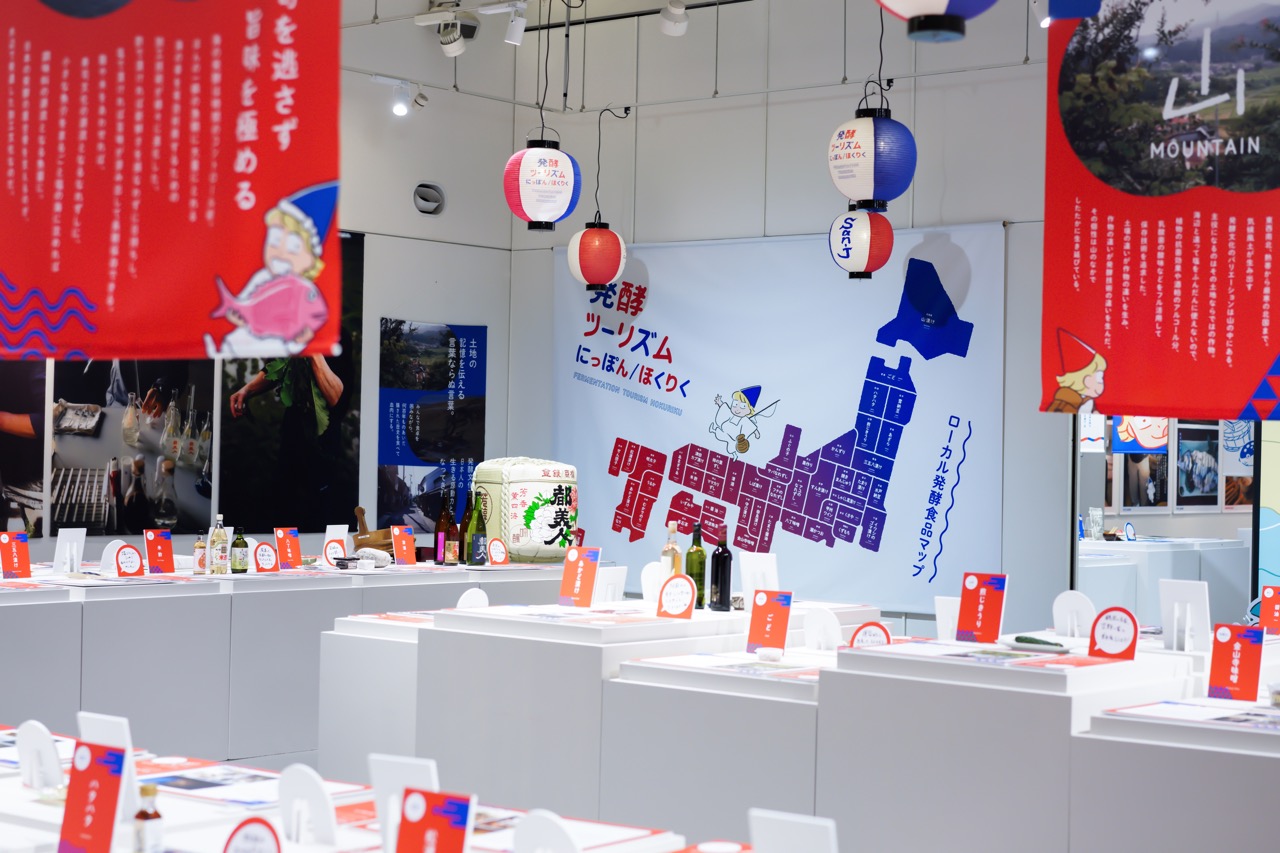

Mr.Ogura
So, the fact that fermentation science and enzyme chemistry have thrived in Japan is connected to our rich natural environment.
Prof. Shimizu
Yes! For example, although we think of Japan as a small country, it stretches all the way from the cold zone of Hokkaido in the north to the subtropical zone of Okinawa in the south. The amazing diversity of living things means that we have many kinds of microbes suitable for creating alcohol. Although Japanese may not have been good at heating and boiling compounds in flasks, we have very skillfully made use of living organisms.
Mr.Ogura
I sometimes attend overseas conferences on fermentation and intestinal bacteria, where I get the chance to talk with people from various countries. If we look at the range of fermented foods, Japan makes use of a far greater variety of bacteria than Europe.
For example, the bacteria involved in nukazuke (vegetables pickled in rice bran) and kusaya (salted, dried, and fermented fish) are generally considered useless to humans. Yet, we use them to produce delicious and healthy food. Rather than analyzing the properties of various bacteria one by one to make sure that our results are reproducible, we take a more artisanal approach to our fermentation industries. “Oh, look! If we do it this way, the result is more balanced.” In this sense, Japan is a fascinating country.
Prof. Shimizu
That is precisely because we have such an abundance of nature, as well as a close connection to living things.


Prof. Shimizu
In our research, it is not always easy when we are trying to make good use of a particular organism. Sometimes we have a blueprint and everything goes well if we follow it, but sometimes we do not . In that case, it is important to try and “get along with” the bacteria or enzymes. Japanese people seem to be good at this.
Mr.Ogura
About 100 years ago, there was an amazing Japanese man named Kaiun Mishima. He was a researcher, entrepreneur, and philosopher. On a visit to Mongolia, he found that local people drank an alcoholic beverage made by fermenting horse milk. On returning to Japan, he reproduced this beverage to create the popular product Calpis, also known as Calpico.
Calpis is made through the action of several bacteria working together. If the bacteria are separated, they do not produce the desired effect. The drink has been produced for 100 years. Over this time, the multiple kinds of bacteria have been used together and topped up in the fermentation process just like how pickles or yogurt are produced
If we took a European scientific approach, you would separate the mixture of bacteria to analyse individually. I think it is amazing thatthe mixture of bacteria are used as it is.
Mr.Ogura
When I first visited Amano Enzyme, I was impressed by their words, “We learn from nature.” The company’s aspiration is to harness the power of nature to create speciality enzymes for developing new technologies for our society.
We know that Amano Enzyme makes enzyme products based on this concept. But what does the company do exactly from day to day?
Dr. Koikeda
Our main purpose as a company is to try and meet the needs and demands of society. Our customers, who come from a variety of fields, approach us with a variety of problems, mainly related to chemical reactions. We ask ourselves whether we can solve the problem using enzymes?
Even if there is an enzyme that can do the job, it may not be possible to achieve sufficient performance. We then look for new enzymes or try to make improvements to meet the performance requirements.
If there is no suitable enzyme, we have to “bow down to nature” to find a new enzyme. We explore various microorganisms looking for enzymes that react in the desired way. Finally, when we find a suitable enzyme, we commercialize it and provide it to the customer.
Mr.Ogura
Do you receive requests from food manufacturers or medical manufacturers?
Dr. Koikeda
Yes we do! We also do work for chemical and cosmetics manufacturers. So, our business is very diverse.
Mr.Ogura
One famous enzyme used in food is the enzyme that makes bread expand.
Dr. Koikeda
Bread getshard after a few days. But today’s bread does not , even after three or four days. This is as a result of enzyme reactions that help the bread to retain its softness. Multiple types of enzymes enable this effect. We are researching different enzyme combinations and how to use them for different applications.
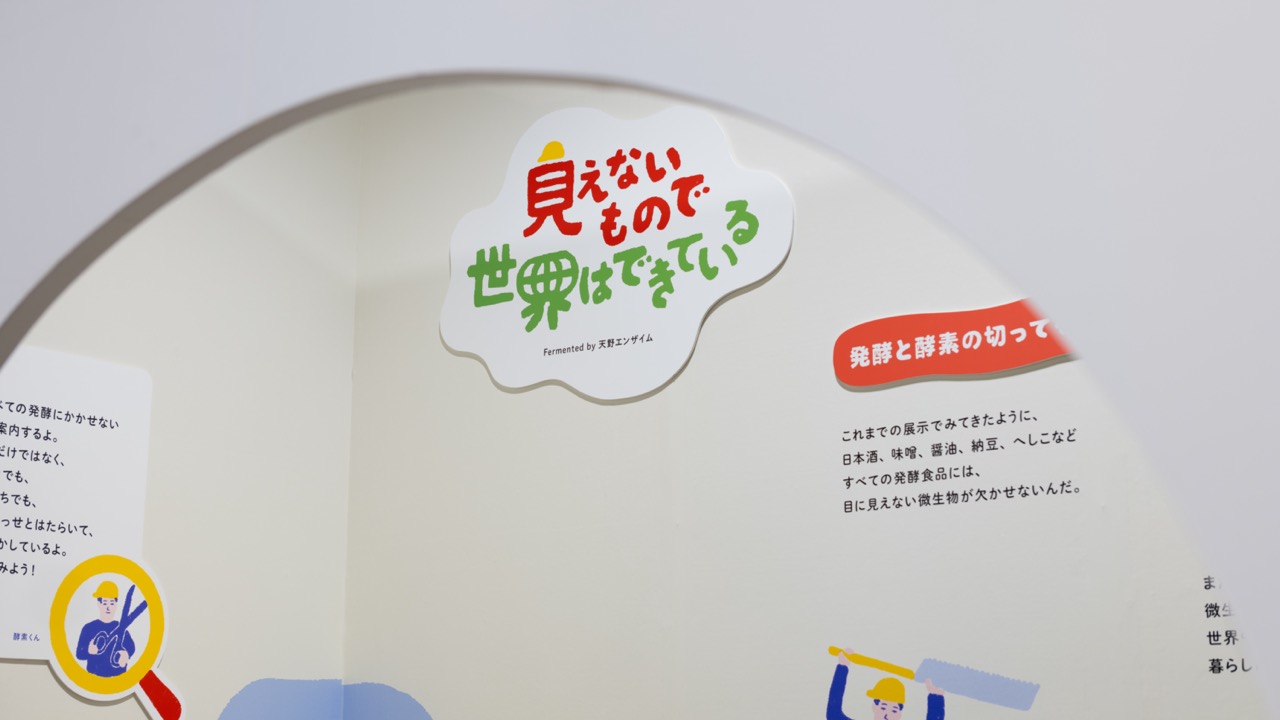

Mr.Ogura
I am sure that many challenging problems are brought to your lab as well, Prof. Shimizu.
Prof. Shimizu
Sesamin is a well-known product sold by a major manufacturer of alcoholic beverages. It is a compound that is present in sesame seeds in tiny quantities, around 0.5%. This is one of the products that originated in research done in our microbiology lab.
Mr.Ogura
What do you mean?
Prof. Shimizu
All kinds of organisms, plants and animals, produce oils. These oils have a wide variety of characteristics. You have probably heard of DHA and EPA, for example. “What if we used microorganisms to make such oils?” That is the reflection that got the ball rolling.
We then discovered that one type of mold that lives in soils all around the world produces an oil containing arachidonic acid, a substance similar to DHA and EPA.
Mr.Ogura
Does the mold make the oil?
Prof. Shimizu
Yes. We sent a sample to a large U.S. baby formula company, which adopted it. Now, many powdered milk products for babies around the world contain small amounts of the mold oil we discovered.
Now that the substance is being used industrially, we want to produce as much of it as possible. So, we thought, “What if we fed the mold with oil instead of sugar? Would that make production more efficient?” However, when we fed the mold in our culture medium with sesame oil, it did not produce the desired oil. This meant that something must be stopping the reaction pathway somewhere.
After some investigation, we found that a compound called sesamin was responsible for this effect. So, in the process of trying to make a lot of arachidonic acid oil, we discovered that sesamin acts as an inhibitor.
Mr.Ogura
So, the discovery about sesamin was an accident?
Dr. Koikeda
We discovered that sesamin counteracts the effect of certain reactions in the liver and lowers the concentration of cholesterol. We concluded that if taking sesamin makes the liver healthier, we should sell that too.
Mr.Ogura
It is very much like fermentation research. Nowadays, university labs are under a lot of pressure to do research that is useful, which I think is senseless. The most interesting thing about chemical research is that it produces unexpected outputs.
This kind of process is exactly what “learning from nature” is all about. There are things in the natural world that we cannot penetrate by just thinking. We need to let nature teach us about them . It seems to me that one reason why the Japanese enzyme industry is so unique is that we try to do exactly this; not only in our traditional industries but also with the latest technology.
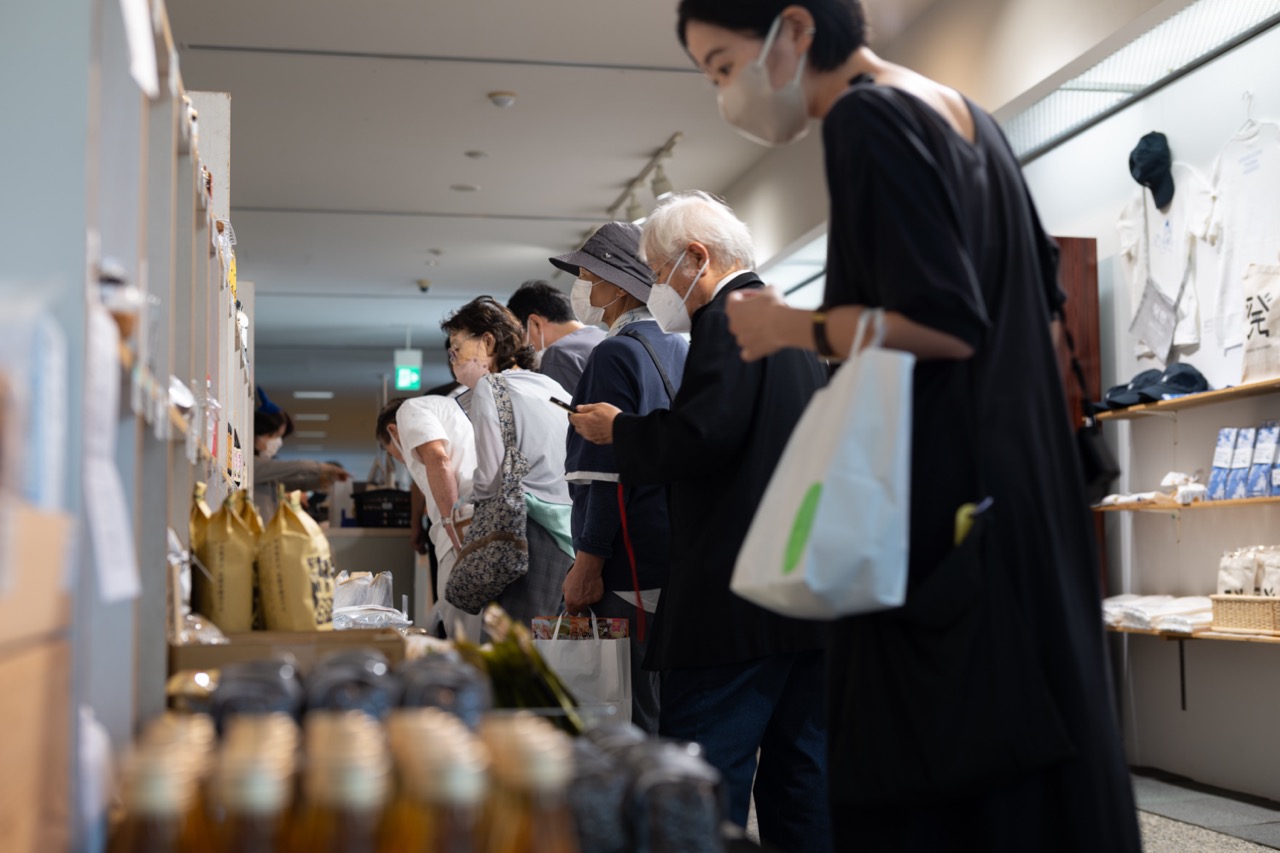

Mr.Ogura
In the 21st century, as petroleum products become increasingly limited, many industries need to be radically transformed. What are the prospects for the enzyme industry over the coming years?
Dr. Koikeda
When we create useful new products from new raw materials, we need new catalysts, i.e, substances that control chemical reactions. If instead of coal or petroleum, we make use of biomass, as it is produced by nature, it will be important to have catalysts that can act on natural materials in various ways.
One likely source of such catalysts is, of course, microorganisms. I therefore believe that new enzymes found in microorganisms will be increasingly important in the future.
Mr.Ogura
In this sense too, Japan’s amazing variety of microorganisms are “treasure troves.”
Dr. Koikeda
Billions of years have passed since living organisms arose on our planet. In all this time, the natural world has engaged in constant, repeated trial and error, leaving behind microorganisms of countless different forms. No matter how hard humans try to advance the science and technology of chemistry, we have only done this for just a few centuries; a minute fraction of the time that nature has operated. This is why I believe it is important to learn from nature and apply its wisdom. This is the attitude we need to have.
Mr.Ogura
In the time remaining, we will take some questions from the audience.
ー
(Question from audience)
What is your favorite enzyme?
Mr.Ogura
I have too many (laughs)!
Dr. Koikeda
Enzymes that break down substances are important, but there is also huge potential in enzymes that combine and transform substances. If I have to give an answer, I would say this kind of enzyme (laughs). I think that living things that can create many kinds of forms are cool. The enzymes involved in such transformation processes are very interesting.
Mr.Ogura
What is an example of that kind of enzyme?
Dr. Koikeda
In food preparation, different ingredients will have different textures, shapes, and sensations. Using a different kind of meat changes a dish. Imagine a steak that is so tender that anyone can eat it, but also chewy. It would be interesting if there were enzymes that could do this.
Mr.Ogura
I see. It is likely that enzymes that change the texture of food will be developed. How about you, Prof. Shimizu?
Dr. Koikeda
After working with microbial enzymes for many years, I do not really have any preferences, but I always feel happy when an enzyme is utilized in industry. I also feel some attachment to the enzymes that I discovered through my own hard work. After investing a lot effort in carefully cultivating a microorganism or enzyme, I develop affection for it, like that of a parent for a child (laughs).
Mr.Ogura
What are some of the enzymes you have worked on?
Prof. Shimizu
Pantothenic acid, a vitamin used in cosmetics and other products, used to be made by chemical synthesis, but we developed a way to produce it through an enzyme reaction. Around half of the 10,000 tons of pantothenic acid produced globally each year is made using lactonase, an enzyme that we discovered.
This is another enzyme produced by mold. It was real struggle to find it. Figuring out how to process the enzyme so that we could make it react in tanks to produce what we wanted was also a massive effort.
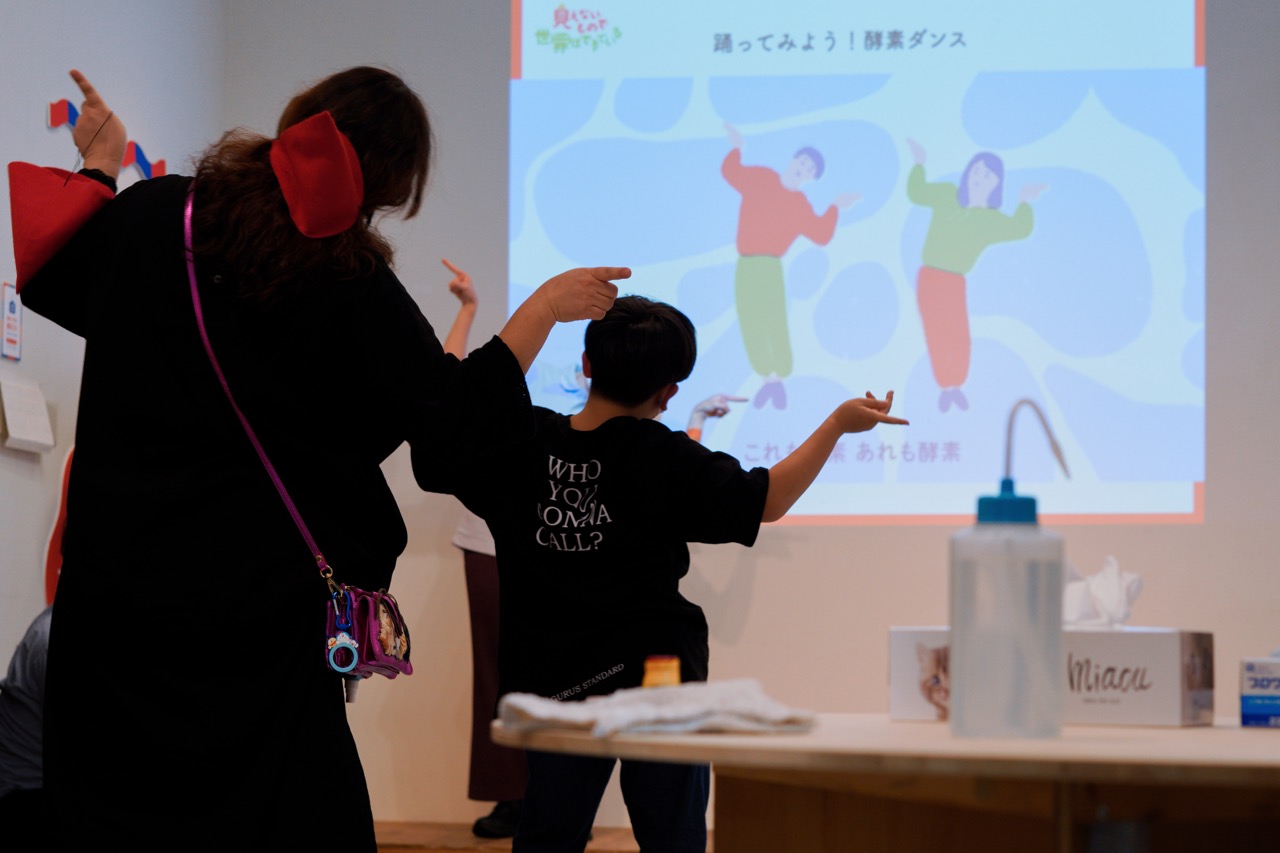

ー
(Voice from audience)
What is your favorite food made using enzymes?
Mr.Ogura
Another good question!
Dr. Koikeda
My favorite is sake (laughs). A combination of enzyme reactions is responsible not only for the alcohol but also for the aroma and flavor to a large extent. These also depend on the raw materials and the microorganisms used. That is what makes the process so interesting.
Mr.Ogura
The two key microorganisms that control sake production are koji and yeast, which both incorporate an enormous number of different enzymes. The magic of sake-making lies in the fact that it allows various enzymes to work in different ways. Sake brewers think of combinations like, “I want to make this yeast and this enzyme in this koji interact at this moment to produce this kind of taste.” It is a very alchemical process.
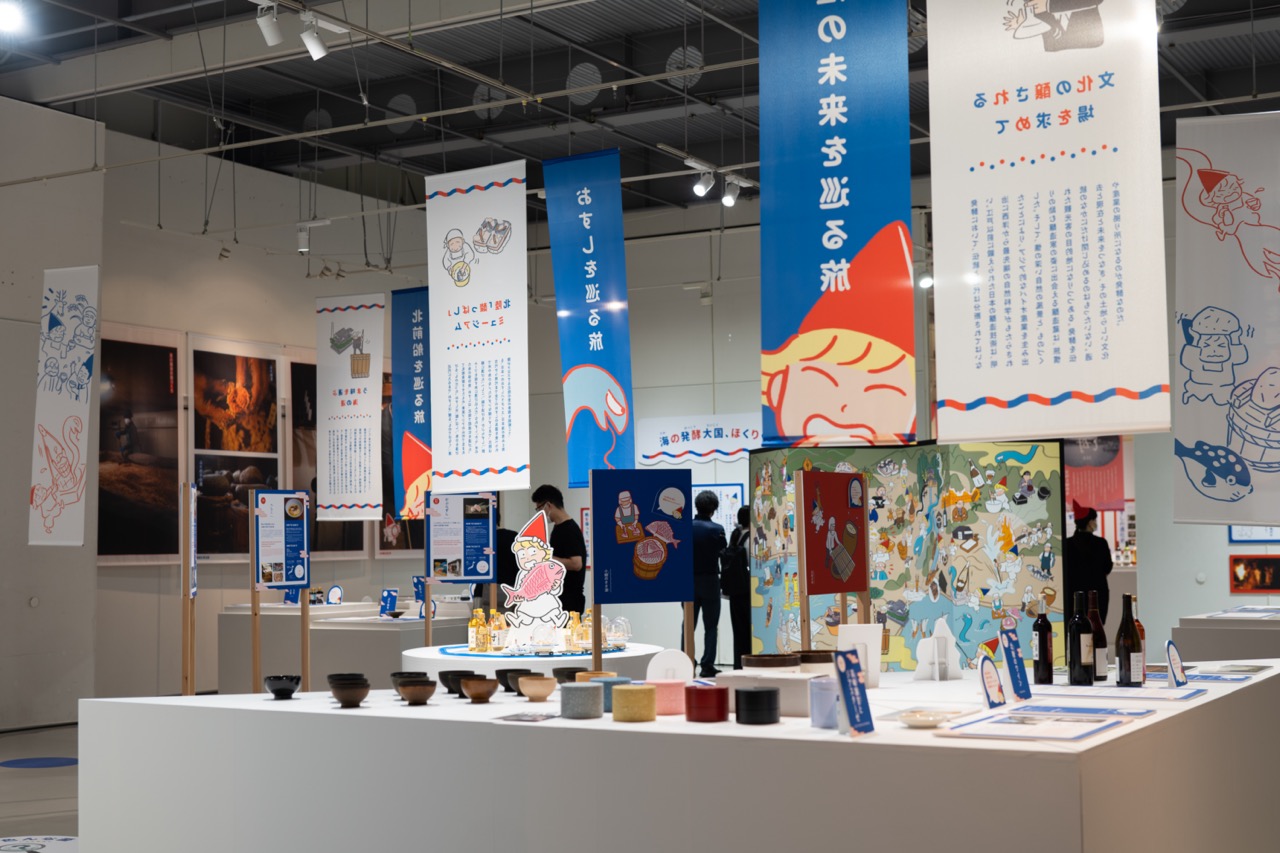

Prof. Shimizu
My favorite is sushi. I noticed narezushi (fermented fish pickled with rice) in the exhibition. It takes a long time to make. The biological transformation process is generally long. For anyone who loves sushi, it is irresistible. You want to eat it right away (laughs).
The main reason that sushi is sour is lactic acid fermentation. The lactobacilli work slowly to make the sushi sour. But then one day, someone thought, “Why not just pour vinegar on rice and put some fish on top?” That is nigirizushi. I am pretty sure it was invented by a vinegar maker (laughs). I think the idea that originally drove the popularity of Edomae (nigiri) sushi was to sell as much vinegar as possible.
Mr.Ogura
I heard the same thing from a major vinegar manufacturer. They said that adding vinegar makes it possible to make and eat sushi quickly, since the acidity is produced in advance by the enzymes of acetic acid bacteria.
The process of making fermented sushi was established long ago in China, Thailand, and Myanmar. Impatient Japanese people learned to make their food sour in the same way, but one day they hit on the idea of using the enzymatic activity of microorganisms to make it sour instantly? It is interesting that this kind of sushi has now swept the world.
Prof. Shimizu
So, nigirizushi is the ultimate fast food. It is like cup noodles (laughs). I think it is an amazing Japanese invention.


Mr.Ogura
I have heard many new and interesting stories about enzymes today. I do not usually get to hear this kind of information, so it was a very rare opportunity for me. I learned a lot.
Enzymes are an indispensable “keyword” of this exhibition on the theme of fermentation. In my opinion, enzymes will play a major role in 21st century industry. I hope to continue working with you to promote awareness and understanding of enzymes. Thank you very much, Dr. Koikeda and Prof. Shimizu!
Prof. Shimizu
Thank you very much.
Dr. Koikeda
Thank you very much.


Enzymes are active in every aspect of our world, and we are seeking new possibilities for them.
In this corner, we visit people who are currently active in various fields with "Enzo" and ask them about their stories.

